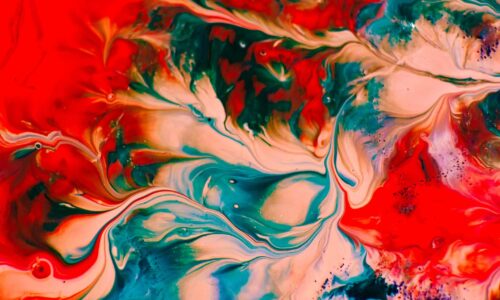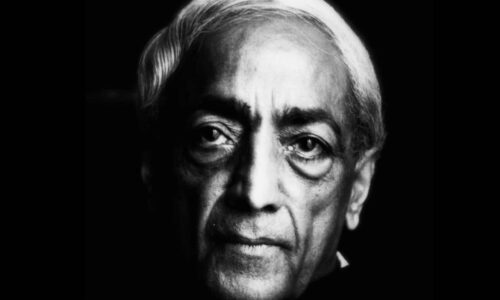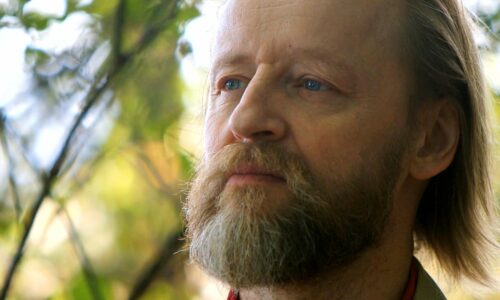“Look, every object in this world, everything, is in a state of dancing. Even our speeches, this conversation – these are also nothing but vibrations of a dance rhythm.”
Anandamayi Ma
This touching quote from Anandamayi Ma describes the cosmic dance in which every appearance is part of the great rhythm of eternal change. Nataraja (the king of dance), as shown in our picture, shows Shiva in his cosmic dance (tandava) symbolizing the process of creation, destruction and rebirth. When we observe nature, we can naturally witness the changes of birth, life and death. There is no ego in opposition, the energies flow freely, as it is intended for them. The Buddhist Tertön (revealer of spiritual treasures] Chögyam Trungpa writes in his book Spiritual Materialism: „If we cannot dance with the rhythm of life, we will not be able to combine samsara and nirvana in accordance with our insight gained from Shunyata.“
Even in the reports about Jesus Christ there is a passage in which he, knowing about his crucifixion, stands in the middle of his apostles dancing around him, and explains to them that dance can bring us to the center of life, to this full participation without calculation or resistance, which means freedom. Perhaps that is why it is so supportive to also pursue dance as a spiritual practice – to connect internally with an external rhythm and to give free rein to expression? Osho was asked why he included dancing in his meditation. His answer: “Because that’s the only way to do nothing: dance to the limit, dance yourself in ecstasy, dance like crazy. And when all your energy is absorbed in it, there comes a moment when the dance suddenly happens by itself, without effort, that is action without action.“
The following dialogue between Unmani and Deva took place in summer 2021 during the “Dharma Talks” at Gut Saunstorf Monastery. Unmani integrates free, meditative dance into her meetings.
Deva: What role does dance play as a spiritual practice on the Inner Path?
Unmani: I think for me, in my experience with moving the body, first of all, it´s such a deep invitation to come out of the head and out of the thinking into feeling, sensing. Because so often with this teaching, we can just be sitting, talking. And that can also be of course beautiful, but it´s great when it´s also accompanied by some other kind of exploration that is more physical. Then, whatever concepts or words have been said in this talking part can actualised in your direct experience. The insights can become real for you through your own experience and exploration. And that´s so important, because without that it can be flat and almost abstract.
Dance is so playful, it can be; of course it can be also very serious, but the way I work with it is to invite more and more playfulness and freedom. Like children, cause as adults we tend to get very stiff. Feeling the stiffness and tension in the body and because we´re taking ourselves very seriously. We restrict our movements. So, when moving and following the flow of energy as it moves in the body and allowing ourselves to follow that, we meet all these mental barriers that seemed to have stop that flow. And if the invitation is there and the sense of safety is there, then we can meet those barriers and say: “Ok thank you very much, barrier. You have helped me in the past, you have protected me and you have been very useful in the past but right now, thank you very much, and please step aside.” So we open up more and more and feel the experience of bodily freedom more and more.
And we can be surprised. I´m so often surprised as I watch myself dancing and moving. “Ah, that´s nice.”
It´s a feeling of aliveness and you never know what she´s gonna do next, when she´s just following the flow of energy. And it could be in small movements, follow something really subtle, or it could be something really big, strong. So usually, in our society we cannot contain that energy, we try to be growing up and be important people, knowing what we´re doing and all that seriousness. And so we just can let that go and just express. It´s very freeing.
Of course, it goes together with all art forms, forms of creativity; music, painting, art expression in general, it´s the way of stepping out of the mind and following that live force wherever it may take you, even when it might seem crazy or too much. Or it can feel really risky, nobody will like it or like you. Can feel very scary for yourself to find yourself expressing something really big. But you just keep following, following the ringing bells. And it can be such a beautiful meditation, when you lose yourself into the dance, into the music or the art, whatever. You lose your mind, and there is only the art happening, the dance happening. It´s not me dancing, me singing.
Deva: And would you say, I mean, once the dance is finished and then the mind comes back, is there something that can integrate that what has been experienced in the dance into the experience without the dance?
Unmani: But, you know, you are always dancing really. The dance is never over. And that´s how I would see it, that´s the only way to integrate it. Not through any doing or trying. Yes, there´re times when you specifically put on music and you say: “Right, I´m dancing in this time.” And in that time perhaps you go deeper and you have deeper insights. But when the music stopped and you´re apparently not dancing anymore, it´s only a mental idea, right? “Now I have to pull myself back together and be serious again or be like this human robot or something. But, of course, you don´t have to ever pull yourself back together. You take the beautiful insights that you had in your exploration through dance. And you watch yourself dancing in your speaking, dancing in your working, when you´re relating. It never stops, always following the flow of energy. Watching the interaction happening, watching that human do, whatever she does.
Deva: That is very beautiful, that it is a dance.
Unmani: Yes. We are dancing together now.
Deva: I have never seen it like this. I’ve done a separation there. This is very enlightening. Thank you!
Unmani: Thank you.
Wishing you all a flowing dance into the Year 2022!
„He who knows the power of the dance lives in God.”
Rumi
*Shunyata = emptiness, voidness. Central term of the Buddhist school of Madhyamaka, denoting the insubstantiality of all phenomena in their conditional arising and impermanence. Emptiness is a euphemism for the non-existence of any essence of being, for the absence of a self, an ego and an intrinsic nature of things.
Further reading:
- Die to live (Umani)
- The Myth of Enlightenment (OM C. Parkin)
- Intelligence of Awakening (OM C. Parkin)




0 Kommentare